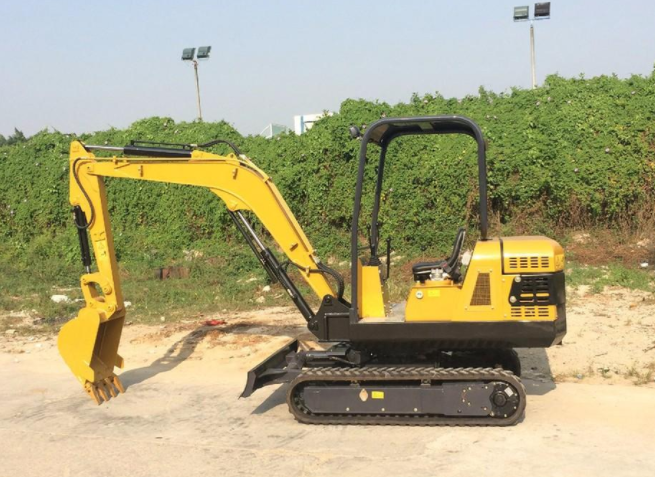- info@hightoptools.com
- Monday - Sunday 9.00 - 18.00
WhatsApp: +86 18162052962

The common causes of crankshaft failure of small excavator diesel engine are:
First of all, when the lubrication is not good.
A poor diesel lubrication system and the semi-friction connection between the journal and the gasket (that is, the bearing at the cut is not strong) will cause the bearing bush to burn out and often use up the shaft. After the root is removed, the stress will change and friction will occur between the bottom of the crankshaft and the crank arm.
Second, the bearing is not working properly.
For diesel engines, if the main bearing rotates through the rolling pivot, or the gap is too large and the main bearing shaft is different or too large, that is, the crankshaft, flywheel, radial deflection, and the specific gravity of the diesel itself. In addition to the uniform force on the crankshaft, it also affects the work of each cylinder. Similarly, if the gap of the connecting rod bearing assembly is too large or the alloy falls, the impact load will cause the crankshaft to appear for the first time, thereby increasing the cause of damage.
Third, the loosening of the main bearing cap nut is one of the important reasons for the premature failure of the crankshaft, because the crankshaft is lost or loose in the support, and each coaxial bearing hole is coaxially offset.
If the aisle after the main bearing nut loosens loosens the forklift axle and the bearing clearance affects the aisle, the diesel engine must be out of tolerance. In other words, the main diary is lost. If a concentric shift occurs and the crankshaft rotates in the housing to the end of the housing hole, the crankshaft load will be different and the crankshaft may be damaged.
Fourth, the axial disturbance of the crankshaft is too large.
If the clearance along the crankshaft is too large, the main reason is the axial movement of the crankshaft. The crankshaft, which is the thrust bearing of the connecting piece, is located on the 4th side of the main track, and it has a directional clearance when the crankshaft reaches 0.5-0.6 mm or more. As a result, the working load diesel engine and the crank arm having the crank reaction force on the bearing end face become heavier to ensure a certain degree of deflection. Stress concentration can accelerate the cracking process of the crankshaft.
The flywheel is moving.
Fifth, the loose flywheel bolts will eventually damage the crankshaft assembly, resulting in crankshaft fatigue, loss of dynamic balance and significant loss of inertial force. When the crankshaft and flywheel pass through this matching cone (for example, diesel engine S195), the flywheel is either used as an outer surface, or the crankshaft breaks and gets stuck in the keyway, such as the function of the crankshaft. The coupling area is less than 75%. diesel engine.
Sixth, the power is out of balance.
When the maintenance is switched to the crankshaft, the iron or iron balance does not meet the unbalance requirements, and the original balance is lost. The crankshaft bearing is easier to manufacture, but the inertial impact force is relatively high. In addition, when repairing the crankshaft, the bearing will deviate from the crank radius, causing strong vibration and overloading of the diesel engine, which will increase the tolerance of the crank arm I and cause the imbalance to exceed the centrifugal force. Long time (ie, rupture) can easily fatigue the crankshaft.
Seventh, the crankshaft is not properly grounded.
Only the crankshaft, because the crankshaft is the most important factor that affects the crankshaft, crankshaft, connecting rod journal, the rounded corners between the main journal and the crankshaft, and the bending fatigue strength of the crank of the starting arm, so ignore the main journal polishing, please ignore the rounded corners, The shaft journal is coaxial, parallel, crank radius, other repair shoulder and shaft journal surface roughness, as well as the size and shape of the angle between each crank pin. Grinding and non-grinding wheels. Incorrect fillet drilling or right-angle fillet cannot choose the correct fillet. Therefore, the result obtained here is that the crankshaft fillet is prone to stress concentration and strength reduction, and is prone to cracking.
Leave a comment